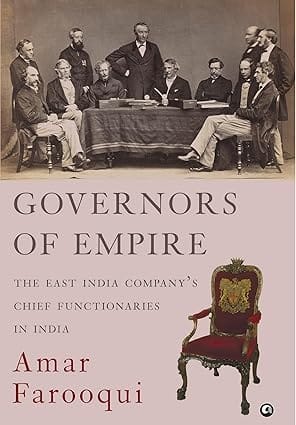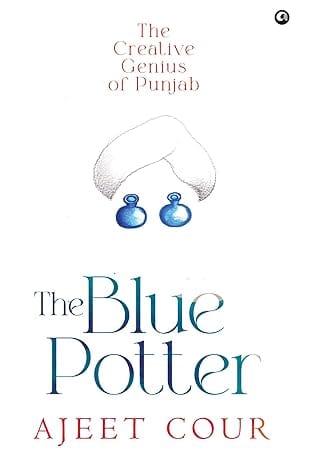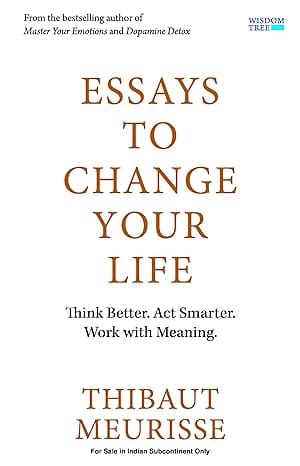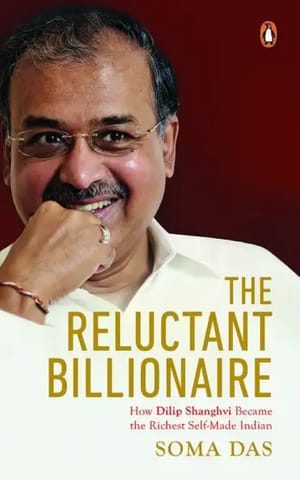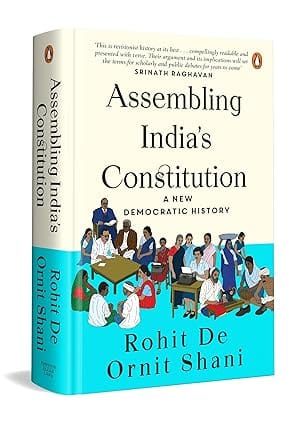WELCOME TO MIDLAND BOOK SHOP!
SHOP FOR
- Non-ficton
- Non-ficton
- Contemporary Fiction
- Contemporary Fiction
- Children
- Children
- Comics & Graphic Novels
- Comics & Graphic Novels
- Non-Fiction
- Non-Fiction
- Fiction
- Fiction
Shop No.20, Aurobindo Palace Market, Hauz Khas, Near Church +91 9818282497 | 011 26867121 110016 New Delhi IN
Midland The Book Shop ™
Shop No.20, Aurobindo Palace Market, Hauz Khas, Near Church +91 9818282497 | 011 26867121 New Delhi, IN
+919871604786 https://www.midlandbookshop.com/s/607fe93d7eafcac1f2c73ea4/677cda367903fd013d69b606/without-tag-line-480x480.png" [email protected]9788119635283 68dd26ab3b23a1dad5c6ac6d Governors Of Empire The East India Companys Chief Functionaries In India https://www.midlandbookshop.com/s/607fe93d7eafcac1f2c73ea4/68dd26ad3b23a1dad5c6ac75/71-cqhedrpl-_sy425_.jpg 9788119635283
In April 1608, when a ship named Hector—belonging to the English East India Company—arrived on the shores of Surat in present-day Gujarat, no one foresaw how some of the merchants on board would go on to alter the course of history in India. From the moment of its docking to the Revolt of 1857, a succession of its eminent passengers helped transform the Company from a trading collective to a colonizing juggernaut. In Governors of Empire, historian Amar Farooqui traces the journeys each of these men undertook, from arriving on Indian shores, through acquiring territories using equal parts trade agreements and political deceit, all the way to returning to Britain considerably wealthier than before.
Beginning with Robert Clive, the self-proclaimed hero of the British imperial project who played a pivotal role in the annexation of Bengal, the book follows several important governors whose actions ultimately delivered India into the hands of the Crown. After Clive came Warren Hastings, who began his tenure as governor of Bengal and settled down to govern both Bengal and Bihar. His ‘rule’ was followed by the regime of Charles Cornwallis, often portrayed as the golden age of British rule in India—a claim supported by colonially-sponsored historiography alone. After him, lesser-known figures like John Shore and Robert Hobart were followed by Richard Wellesley, under whom the system of ‘subsidiary alliances’ became a regular feature of the Company’s expansionist policy in India.
Lord Moira came next, and demolished the peshwai, destroying the rule of the Marathas in western India. William Bentinck’s governor-generalship then marked an interlude before a violent phase of large-scale warfare that completed the Company’s conquest of the subcontinent. Lord Dalhousie, who followed Bentinck, played a key role in the annexation of Punjab and Awadh, expanding the Company’s frontiers to cover swathes of northern India. He was succeeded by Charles Canning, the last governorgeneral to be appointed by the Company, and John Lawrence, the last of the Company’s old timers to rule over the Indian empire (he was crucial to the recapture of Delhi after the Revolt of 1857).
Through rigorously drawn portraits of the Company’s key functionaries, Governors of Empire brings to vivid life the story of the East India Company’s conquest of India through the lives and deeds of its governors.
Beginning with Robert Clive, the self-proclaimed hero of the British imperial project who played a pivotal role in the annexation of Bengal, the book follows several important governors whose actions ultimately delivered India into the hands of the Crown. After Clive came Warren Hastings, who began his tenure as governor of Bengal and settled down to govern both Bengal and Bihar. His ‘rule’ was followed by the regime of Charles Cornwallis, often portrayed as the golden age of British rule in India—a claim supported by colonially-sponsored historiography alone. After him, lesser-known figures like John Shore and Robert Hobart were followed by Richard Wellesley, under whom the system of ‘subsidiary alliances’ became a regular feature of the Company’s expansionist policy in India.
Lord Moira came next, and demolished the peshwai, destroying the rule of the Marathas in western India. William Bentinck’s governor-generalship then marked an interlude before a violent phase of large-scale warfare that completed the Company’s conquest of the subcontinent. Lord Dalhousie, who followed Bentinck, played a key role in the annexation of Punjab and Awadh, expanding the Company’s frontiers to cover swathes of northern India. He was succeeded by Charles Canning, the last governorgeneral to be appointed by the Company, and John Lawrence, the last of the Company’s old timers to rule over the Indian empire (he was crucial to the recapture of Delhi after the Revolt of 1857).
Through rigorously drawn portraits of the Company’s key functionaries, Governors of Empire brings to vivid life the story of the East India Company’s conquest of India through the lives and deeds of its governors.
About the Author
Amar Farooqui is Professor of History (retired), University of Delhi. He taught history for many years at Hansraj College, Delhi; and has been Fellow, Prime Ministers Museum and Library (formerly known as Nehru Memorial Museum and Library), New Delhi. He is currently Visiting Professor at Ashoka University.
in stockINR 799
1 1
Email ID already exists!
Your Current password is incorrect
Password Updated Successfully
Thanks for your Feedback
- Home
- Non-Fiction
- Governors Of Empire The East India Companys Chief Functionaries In India
Governors Of Empire The East India Companys Chief Functionaries In India
ISBN: 9788119635283
₹799
₹999 (20% OFF)SIZE GUIDE
Sold By: Hauz Khas - Aurobindo Market
Details
- ISBN: 9788119635283
- Author: Amar Farooqui
- Publisher: Aleph Book Company
- Pages: 344
- Format: Hardback
Book Description
In April 1608, when a ship named Hector—belonging to the English East India Company—arrived on the shores of Surat in present-day Gujarat, no one foresaw how some of the merchants on board would go on to alter the course of history in India. From the moment of its docking to the Revolt of 1857, a succession of its eminent passengers helped transform the Company from a trading collective to a colonizing juggernaut. In Governors of Empire, historian Amar Farooqui traces the journeys each of these men undertook, from arriving on Indian shores, through acquiring territories using equal parts trade agreements and political deceit, all the way to returning to Britain considerably wealthier than before.
Beginning with Robert Clive, the self-proclaimed hero of the British imperial project who played a pivotal role in the annexation of Bengal, the book follows several important governors whose actions ultimately delivered India into the hands of the Crown. After Clive came Warren Hastings, who began his tenure as governor of Bengal and settled down to govern both Bengal and Bihar. His ‘rule’ was followed by the regime of Charles Cornwallis, often portrayed as the golden age of British rule in India—a claim supported by colonially-sponsored historiography alone. After him, lesser-known figures like John Shore and Robert Hobart were followed by Richard Wellesley, under whom the system of ‘subsidiary alliances’ became a regular feature of the Company’s expansionist policy in India.
Lord Moira came next, and demolished the peshwai, destroying the rule of the Marathas in western India. William Bentinck’s governor-generalship then marked an interlude before a violent phase of large-scale warfare that completed the Company’s conquest of the subcontinent. Lord Dalhousie, who followed Bentinck, played a key role in the annexation of Punjab and Awadh, expanding the Company’s frontiers to cover swathes of northern India. He was succeeded by Charles Canning, the last governorgeneral to be appointed by the Company, and John Lawrence, the last of the Company’s old timers to rule over the Indian empire (he was crucial to the recapture of Delhi after the Revolt of 1857).
Through rigorously drawn portraits of the Company’s key functionaries, Governors of Empire brings to vivid life the story of the East India Company’s conquest of India through the lives and deeds of its governors.
Beginning with Robert Clive, the self-proclaimed hero of the British imperial project who played a pivotal role in the annexation of Bengal, the book follows several important governors whose actions ultimately delivered India into the hands of the Crown. After Clive came Warren Hastings, who began his tenure as governor of Bengal and settled down to govern both Bengal and Bihar. His ‘rule’ was followed by the regime of Charles Cornwallis, often portrayed as the golden age of British rule in India—a claim supported by colonially-sponsored historiography alone. After him, lesser-known figures like John Shore and Robert Hobart were followed by Richard Wellesley, under whom the system of ‘subsidiary alliances’ became a regular feature of the Company’s expansionist policy in India.
Lord Moira came next, and demolished the peshwai, destroying the rule of the Marathas in western India. William Bentinck’s governor-generalship then marked an interlude before a violent phase of large-scale warfare that completed the Company’s conquest of the subcontinent. Lord Dalhousie, who followed Bentinck, played a key role in the annexation of Punjab and Awadh, expanding the Company’s frontiers to cover swathes of northern India. He was succeeded by Charles Canning, the last governorgeneral to be appointed by the Company, and John Lawrence, the last of the Company’s old timers to rule over the Indian empire (he was crucial to the recapture of Delhi after the Revolt of 1857).
Through rigorously drawn portraits of the Company’s key functionaries, Governors of Empire brings to vivid life the story of the East India Company’s conquest of India through the lives and deeds of its governors.
About the Author
Amar Farooqui is Professor of History (retired), University of Delhi. He taught history for many years at Hansraj College, Delhi; and has been Fellow, Prime Ministers Museum and Library (formerly known as Nehru Memorial Museum and Library), New Delhi. He is currently Visiting Professor at Ashoka University.
User reviews
NEWSLETTER
Subscribe to get Email Updates!
Thanks for subscribing.
Your response has been recorded.

India's Iconic & Independent Book Store offering a vast selection of books across a variety of genres Since 1978.
"We Believe In The Power of Books" Our mission is to make books accessible to everyone, and to cultivate a culture of reading and learning. We strive to provide a wide range of books, from classic literature, sci-fi and fantasy, to graphic novels, biographies and self-help books, so that everyone can find something to read.
Whether you’re looking for your next great read, a gift for someone special, or just browsing, Midland is here to make your book-buying experience easy and enjoyable.
We are shipping pan India and across the world.
For Bulk Order / Corporate Gifting
 +91 9818282497 |
+91 9818282497 |  [email protected]
[email protected]
Click To Know More
INFORMATION
QUICK LINKS
ADDRESS
Midland Book Shop - Hauz Khas
Shop No.20, Aurobindo Palace Market, Near Church, New Delhi
Shop No.20, Aurobindo Palace Market, Near Church, New Delhi

